
|
SUMMARY:
‘Good, fast, cheap: pick two.’ If you’ve ever managed accounts or projects, you know this adage well. But I say…don’t settle. In this article we bring you all three. Read on for case studies about site speed improvement, good brand positioning, and getting cheap traffic from social media. Good, fast, cheap. Get all three with MECLABS AI. It's trained on MECLABS parented methodology and it's totally FREE, you don't even have to register (yet). |
This article was distributed through the MarketingSherpa email newsletter.
At MarketingSherpa, we give you ideas for improving your marketing by bringing you success stories from your peers. And today we bring you three:
And while I looooooove reading – every chance I get I curl up with a newspaper or magazine – I have to admit that this is the year 2024. And there are other ways to learn as well. So before we jump into these case studies, I should mention the new Marketing Professor expert assistant in MECLABS AI. (MECLABS is MarketingSherpa’s parent organization, and MECLABS AI is totally FREE to use, you don’t even have to register for now).
Flint McGlaughlin explains the new Marketing Professor expert assistant in the below video…
Now, let’s get back to learning by reading. Here are those case studies…
Blast Zone is a children’s products manufacturer that makes home inflatables.
The company’s ecommerce platform was on Magento 1. With the platform reaching end of life, the website dealt with dysfunctional extensions, a lack of security and functional updates, and high costs of site maintenance.
As a result, marketing efforts were ineffective, which stunted the company's growth and the overall performance of the platform. And the slow-loading page experience was also hurting the site’s page rankings in Google.
Creative Sample #1: Product page before redesign and optimization

Creative Sample #2: Site speed before redesign and optimization

The team decided to move to Magento 2 platform to tackle the problem with Magento 1 end of life and its consequences. This gave a more secure and flexible ecommerce platform and set the stage for vital customization as well as optimization.
Moving to Magento 2 required key technical steps:
But the transformation was not solely a technical one. While making the move, they also took the opportunity to improve the website navigation and perform a comprehensive makeover of the website aesthetic and style.
For example, they replaced the top navigation bar with a hamburger menu. They didn’t want to overload the page and visitor attention with extra elements.
Creative Sample #3: Product page after redesign and optimization

Additionally, team added block of customer reviews to the homepage to help increase trust and engagement.
Creative Sample #4: Reviews block on the homepage

A ‘Safety Is Out Top Priority’ static block was added to each category page to communicate the importance placed on ensuring secure and reliable products. At the bottom of the block, the team included evidentials to reassure customers about the post-purchase experience.
Creative Sample #5: Static block on category pages

In another effort to optimize user interaction, the team replaced the static top categories banner with a slider feature. This dynamic slider was used to capture visitors’ attention with visually appealing transitions.
Creative Sample #6: Top categories, before (banner)

Creative Sample #7: Top categories, after (slider)

Understanding the crucial impact of website speed on customer engagement and SEO, the team focused on speed optimization. Using a data-driven approach, key stages in the customer shopping journey were pinpointed and streamlined:
The most challenging aspect of speed optimization involved dealing with JavaScript bundling. The decision to enhance UX/UI led to the adoption of sliders instead of static images and dynamic elements, like a block featuring random reviews. This shift substantially increased the dependence on JavaScript components, necessitating optimization efforts to enhance overall page speed.
Even the Magento extensions designed to bundle JavaScript files provided limited assistance because they loaded the bundled code on every page, regardless of its necessity.
In response, the team developed their own JavaScript bundling technique to maximize the reduction in time to the first user interaction with the page. The key principle behind this technique is its generation of default bundles applicable to all pages, as well as unique bundles tailored to specific page types such as the homepage, product page, category page, category page with layered navigation, simple product page, and configurable product page.
Consequently, only the essential JavaScript files are loaded for each particular page, thereby minimizing server requests for JavaScript files and significantly enhancing overall page loading speed.
“Ecommerce success hinges on various factors, with platform upgrades, usability, and speed standing out as pivotal factors. These elements not only inherently improve marketing metrics but also serve as the groundwork for further growth and successful marketing strategies,” said Anastasiia Yaremchuk, Head of Marketing, Plumrocket (Blast Zone’s development and web design agency).
Upgrading to Magento 2, coupled with enhancements in UX/UI and website performance, synergistically contributed to a notable enhancement in page experience. These strategic measures were implemented in response to Google's core ranking systems, which prioritize content that offers a positive page experience.
The outcome of these optimization endeavors was a 69% enhancement in mobile page speed and a 99 out of 100 score in Core Web Vitals desktop results.
Creative Sample #8: Speed report after redesign and optimization

This substantial improvement had a direct impact on the marketing outcomes, yielding the following results:
“The synergy between upgrading to Magento 2, refining the UX/UI, and enhancing overall website performance resulted in a holistic improvement in our online presence. The quantifiable success in conversion rates, revenue, and search rankings highlights the effectiveness of our strategy in creating a positive and engaging digital experience for our customers,” said Sky Boulton, Principal, Blast Zone.
Smileworks is a provider of Botox and filler to consumers in Liverpool, England. “Here in the UK it’s very common for dentists to practice aesthetic medicine. This is because of the historical split between NHS and private medicine. Private dentistry is private medicine and aesthetics is purely elective private medicine,” said Ed Challinor, Founder, Smileworks.
Originally, the company focused on the results of the procedures.
Creative Sample #9: Instagram ad for lip filler procedure, before

“Here in the UK, the market is split into a large number of individuals who opt for cheap unlicensed treatments and the rest who are people looking for treatment with a medically qualified injector,” he said. “Dermal filler is completely unregulated so ANYBODY can inject dermal filler. Like my mum could do it if she wanted. Because dentists only work in the head and face, their knowledge anatomy, dexterity, and other transferrable skills make them a very good choice for aesthetic practitioners.”
So the team wanted to change the way they were positioning the brand in the market to focus on being medically qualified.
The team spent half a day together coming up with reasons customers should use Smileworks rather than go to unlicensed, cheaper alternatives.
The cornerstone principle was safety, so the new brand campaign simply centered around the word ‘safe.’ They added this word to all their B2C marketing, sales scripts and point-of-sale documents. They peppered it throughout the company’s direct response campaigns on social media They changed the sentiment from ‘beautiful results’ to 'absolutely safe,’ ‘in safe hands,’ and ’safe, trustworthy practitioners.’
“You’re very limited what you can say about aesthetic medicine here in the UK but these ads were really profitable,” he said.
You can see some of the new ads from the campaign below. These ads were on Instagram. “The targeting was the same [as the previous ads with the ‘results’ message]. I left it to the AI to figure out using the website pixel data,” he said.
Creative Sample #10: Instagram ad for lip filler procedure, after

Creative Sample #11: Instagram ad for lip filler procedure, mentioning ‘medically qualified’

“Also 'medically qualified’ won’t mean a lot to you because every practitioner in the US is a doctor I believe. But here in the UK, Instagram is full of ads from people with little or no medical qualifications,” Challinor said.
They team did organic social media posting to support these campaigns – mostly it was horror stories about filler gone wrong and articles about Smileworks’ Dr. MJ being featured as the leader in complication management. “I was amazed that such an ostensibly negative and downright gory campaign did so well on the unpaid side of Instagram. We’d have never gotten the images and content through their filters for ads which is why we used organic Instagram,” Challinor said.
“It’s hard to measure the success of campaigns but since the change clinicians have been having conversations about safety that are instigated by our customers,” he said.
Here are the numbers the team was able to pull together for their Instagram campaign.
CTR was only 1.98%, which is very low for the team, but the amount of actual bookings was much higher than normal. “I put this down to the sentiments about safety and reliability rather than just saying we’re going to do a good job for the patient. People who opted in were more serious about having treatment and easier for our sales team to convert,” Challinor said.
“What is interesting is that the Facebook stats are largely similar. It is so important not to get drawn in by ad ‘performance’ if you’re selling offline. Because the only number you need to look at is bookings and sales. Sometimes an ad can do very poorly but patients book in. Other ads can do very well (5% CTR+) and nobody books in. If I’m honest this is still a mystery to me. But so long as we look at the whole picture I can pick the best-performing ads,” he said.
The sales team booked 24 patients for treatment with revenue of almost £8,000 and net profit of £1,760 from the Instagram campaign. The campaign cost £676.
The team would consider acquiring 24 patients a big success even at break even, since patients come back for repeat treatments because these products last for between six to 12 months.
For the overall campaign, their monthly toxin and filler profit grew from £2,769 to £10,667 after five months. “Accounting/marketing ROI is not an exact science. I don’t want to over-represent the growth. How I would love a business where I could easily attribute sales! This gives you an idea of how difficult it can be to get an ROI when you have a sales team and real products or services and are only looking at one category that is influenced by offline promotions, recalls, sales conversion rates and whether patients are suitable or say ‘yes’ to treatment,” he said.
While safety is important in the facial aesthetics industry, this lesson can be applied to many different products and services as well. “I think it’s important to find a sentiment that really resonates with consumers and also that is a ‘core principle.’ When I was Googling around how to do this I came across the very famous example of Alcoa Steel in the US that implemented a similar ’safety’ core principle. If you are safe the consumer imagines you are also honest, fairly priced, professional and good at what you do,” Challinor said.
Asian Beauty Essentials is a boutique beauty and skincare store founded by Lauren Petrullo, who also founded digital marketing agency Mongoose Media.
Asian Beauty Essentials encountered difficulties on Instagram and TikTok, with few impressions and clicks.
Creative Sample #12: Screenshot from TikTok showing limited visibility

The team decided to give Pinterest a try. They began by looking for an ideal audience that aligned with the brand’s Eastern philosophies – gentle, multilayered routines for long-term skin health – and decided that females, from 18 years old into their 40s, would be the best fit.
They conducted research using Google Trends, Pinterest Trends, and conducted competitor analysis to find popular topics that aligned with ongoing trends and events. For example, Pinterest Trends not only showcases the growing trends but also details the trend of every keyword, which helped the team quickly identify what terms and topics were gaining popularity. They then created boards for these topics.
For example, they made a board called 'Easy Skincare,' where they shared pins about their products and simple skincare solutions. Each pin has a link to the product page for more details.
Creative Sample #13: Pinterest board about simple skincare solutions

“Boards are like shelves where we organize our content. Among our 10+ boards, the ‘Easy Skincare Tips’ board stood out. We created multiple pins there, talking about the benefits of our products and giving a direct link to our website. We also added short videos and turned our blogs into pins,” said Lauren Petrullo, Founder & CEO, Asian Beauty Essentials.
The board had 1,807 pins and 419,420 impressions.
Creative Sample #14: Retailer’s Easy Skincare board on Pinterest

They also created boards for specific holidays, like Christmas and New Year’s. For example, for Valentine's Day, they made a special board and created pins suggesting gift ideas using their products. Each pin is a bit different, targeting various keywords to reach a broader audience.
“For Valentine's Day 2024, we began sharing content in January, making many pins about the occasion, like gift ideas for her. We also had special deals on our website to make it more exciting for everyone,” she said.
Creative Sample #15: Pinterest board for Valentine’s Day

The team has found that SEO matters for discovery. In their beauty niche, the team focuses on long-tail keywords work like ‘beauty routine for girls,’ ‘perfect skincare routine,’ and ‘skincare aesthetic.’
They also discovered that they can reuse their old stuff. They post to Pinterest what they've already posted on Instagram Reels or TikTok.
Creative Sample #16: Example of reposted content that got 3,330 impressions on Pinterest

“On Pinterest, posting four to five pins a day is crucial to staying in the game and keeping the audience interested,” said Sameer Ahmed Khan, Pinterest Brand Manager, Mongoose Media (Asian Beauty Essentials’ media agency).
“The toughest part was making lots of pins regularly because it's important to stay visible on the platform. In the beauty and skincare world, there's a ton of competition from big brands. To come up with thousands of ideas, we used AI, which really helped us stand out,” Petrullo said.
In the first three months on Pinterest, the team got 180,000 views and 5,000 repins. Most importantly, they scored 8,000 website visits “without dropping a penny.”
After a year, they received 5.79 million impressions, a total audience of 2.69 million, and 46,850 outbound clicks to the retailer’s website.
The large majority of their audience on Pinterest– 84% – is in the target age range. The biggest chunk of their audience (30%) is 18-24.
Creative AI Marketing: Escaping the 'Vending Machine Mentality’
The Most Popular Articles about B2C Marketing from MarketingSherpa’s 20 Years of Reporting
Get Better Business Results With a Skillfully Applied Customer-first Marketing Strategy

The customer-first approach of MarketingSherpa’s agency services can help you build the most effective strategy to serve customers and improve results, and then implement it across every customer touchpoint.
Get More Info >MECLABS AI
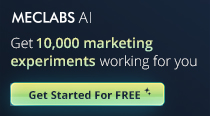
Get headlines, value prop, competitive analysis, and more.
Use the AI for FREE (for now) >Marketer Vs Machine

Marketer Vs Machine: We need to train the marketer to train the machine.
Watch Now >Live, Interactive Event

Join Flint McGlaughlin for Design Your Offer on May 22nd at 1 pm ET. You’ll learn proven strategies that drive real business results.
Get Your Scholarship >Free Marketing Course
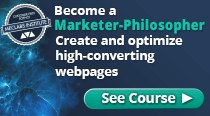
Become a Marketer-Philosopher: Create and optimize high-converting webpages (with this free online marketing course)
See Course >Project and Ideas Pitch Template
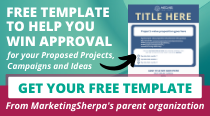
A free template to help you win approval for your proposed projects and campaigns
Get the Template >Six Quick CTA checklists
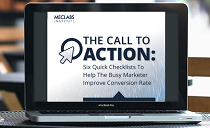
These CTA checklists are specifically designed for your team — something practical to hold up against your CTAs to help the time-pressed marketer quickly consider the customer psychology of your “asks” and how you can improve them.
Get the Checklists >Infographic: How to Create a Model of Your Customer’s Mind
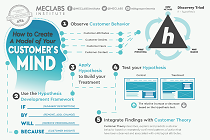
You need a repeatable methodology focused on building your organization’s customer wisdom throughout your campaigns and websites. This infographic can get you started.
Get the Infographic >Infographic: 21 Psychological Elements that Power Effective Web Design
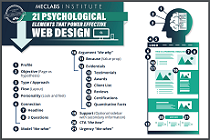
To build an effective page from scratch, you need to begin with the psychology of your customer. This infographic can get you started.
Get the Infographic >Receive the latest case studies and data on email, lead gen, and social media along with MarketingSherpa updates and promotions.